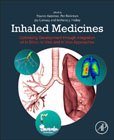
Inhaled Medicines: Optimizing Development Through Integration of In Silico, In Vitro and In Vivo Approaches
Kassinos, Stavros
Backman, Per
Conway, Joy
Hickey, Anthony J.
The inhaled route to deliver drugs to the lungs is widely accepted for treatment of lung diseases, and has been used recently for the systematic administration of drugs. The efficacy of local drug delivery to the lung depends on the amount and site of deposition within the lungs, as well as on post-deposition events. Therefore, quantifying regional deposition, dissolution, local clearance and absorption processes is important in assessing and optimising topical treatments as well as systemic delivery of drugs with limited lung bioavailability. Quantifying regional deposition in vivo via respiratory imaging remains challenging. Experimental, in vivo, assessment of deposition can be complimented by in vitro models often in combination with in silico methods, based in part on Computational Fluid Particle methods, and in part on hybrid 1D-3D methods. Similarly, it is difficult to directly quantify the clinical impact of kinetically competing processes of dissolution, clearance and permeation. Researches rely on a combination of ex vivo, in vitro and computational in silico methods. Yet, for in silico methods to be able to deliver their promise, they must be accepted into the drug development, regulation and approval cycle. Inhaled Medicines in the Age of in silico Population Studies responds to a need for well-designed protocols that will validate these emerging methods in order to generate the necessary consensus among the stakeholders involved. The book aims to show that the technological ingredients are in place, setting the stage for a future of inhaled drug development based in large part on in silico studies. Opportunities and challenges are addressed by a number of experts who tackle the drug delivery problem from different scientific angles. In this highly multidisciplinary field, where progress is occurring at the intersection of several fields of engineering and science, there is a clear need for a book that integrates knowledge and understanding and articulates a clear vision for the upcoming future. Gives a concise account of the state of the art in key areas and technologies such as medical imaging, in silico methods, device and drug formulationProvides a clear description of the development, regulation, and approval cycle of inhaled drugsConsiders the healthcare needs driving the field, and where inhaled drugs could have the maximum impactArticulates how the combination of medical imaging and simulations technologies in the framework of large scale in silico clinical trials could revolutionize the fieldProvides systematic and thorough referencing to sources offering a more-in-depth analysis of technical issues INDICE: Section A: Introduction, medical need, current and future trends in drug and product development for inhalation drug delivery 1. Inhalation medicines: History, current and emerging medical needs 2. The optimal drug 3. Device and formulation Section B: Understanding clinical performance 4. Understanding clinical performance of an inhaled medicine 5. Fate of the deposited dose: clinical methods to assess 6. Dose deposition pattern: In vitro measures 7. Dose Deposition pattern: In silico measures 8. Dissolution/drug release 9. Local particulate clearance 10. Permeation and transport in airways 11. Lung tissue interactions - approaching free concentrations in lung tissue target interaction Section C: Bringing it all together - the role of in silico computational models 12. PK/ PBPK and mechanistic models: 13. In Silico Population Studies: Pulmonary imaging and simulations as an approach 14. The emerging state of the art: supporting the clinic 15. The emerging state of the art: supporting the product development, approval and regulation cycle
- ISBN: 978-0-12-814974-4
- Editorial: Academic Press
- Encuadernacion: Rústica
- Páginas: 550
- Fecha Publicación: 01/11/2020
- Nº Volúmenes: 1
- Idioma: Inglés
